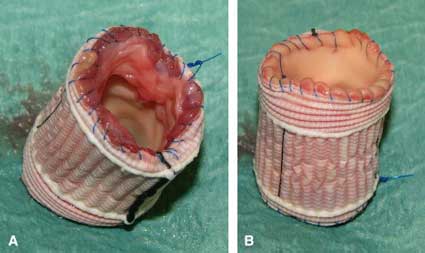Surgeon Q&A: “What About Ross Procedure Autograft Wrapping?” asks William
Written By: Adam Pick, Patient Advocate, Author & Website Founder
Medical Expert: Ismail El-Hamamsy MD, PhD, Cardiac Surgeon, Mount Sinai Hospital
Published: April 23, 2024
I just received a great question from William about the Ross Procedure, an advanced form of aortic valve replacement that moves the patient’s pulmonary valve into the aortic position.

William asked me, “Hi Adam, I am currently 37 and looking at the Ross Procedure for replacement of my aortic valve. I have a tissue valve that was put in when I was 25 that now has aortic stenosis. My question is around the autograft reinforcement techniques during the Ross Procedure. Seems everyone agrees that the new aortic (old pulmonary) valve needs to be reinforced but the surgeons all seem to have their own preference on how to reinforce it. Some use the existing aortic tissue with no external graft and some use an external Dacron graft to wrap the new valve & aorta with all sorts of nuances between the two. Would you have any insight the pros/cons of each technique or aware of any data comparing the different options? I know good Ross results are highly dependent on the technique so trying to gather all the information before choosing between two surgeons. Thanks in advance!”
To help William, I wasted no time contacting Dr. Ismail El-Hamamsy, a leading Ross Procedure surgeon at Mount Sinai Hospital in New York City and current President of the Heart Valve Society. Dr. El-Hamamsy has performed over 500 successful Ross Procedures.
Dr. Ismail El-Hamamsy Says…
I was amazed at how quickly Dr. El-Hamamsy responded to William’s question. Dr. El-Hamamsy wrote in his email to me:
Adam, Thanks for reaching out about this. The question is an important one. The overarching goal of the Ross procedure is to have a living aortic root performing all the normal functions of a normal aortic valve. A normal aortic root is a highly dynamic structure that changes shape and form continuously to adapt to different conditions. This optimizes coronary flow, reduces the stresses on the valve cusps and minimizes the workload on the ventricle. The main issue with wrapping the aortic root inside a Dacron graft is that it prevents this dynamism altogether.
It encases the root within the stiff graft. While it definitely prevents root dilatation in the long term, it takes away much of the benefit of the operation in the first place. So how do we then prevent root dilatation while preserving root dynamism? This is where meticulous surgical technique as we’ve been discussing and teaching for many years comes into play (deep insertion of the autograft, trimming above the commissures, native aortic jacket etc..). And the key part of this is careful BP control in the first 6-12 months after surgery. This allows the pulmonary root to become an aortic root. Last year at the AATS, I presented our 10-year outcomes from my first 455 patients. Follow-up is 99% complete, including echos. At 10 years, the need for reintervention was 2.3% on the autograft. And on echo, the sinuses of Valsalva were very stable in dimension, with no cases of root aneurysms.
So in summary, the goal is to prevent root dilatation all the while preserving root dynamism. Wrapping impairs the latter, which is why I do not advocate to do it. I believe it will negatively impact the outcomes in the long term. I hope this is helpful. Have a great day! Ismail
Many Thanks to William and Dr. El-Hamamsy!
On behalf of our community, many thanks to William for his question and many thanks to Dr. El-Hamamsy for sharing his clinical experiences and research specific to the Ross Procedure!
Related Links:
- Patient Research Alert: Ross Procedure Survival Advantages
- See Dr. El-Hamamsy’s Interactive Surgeon Profile
- Patient Webinar: The Ross Procedure with Dr. Stelzer & Dr. El-Hamamsy
Keep on tickin!
Adam












